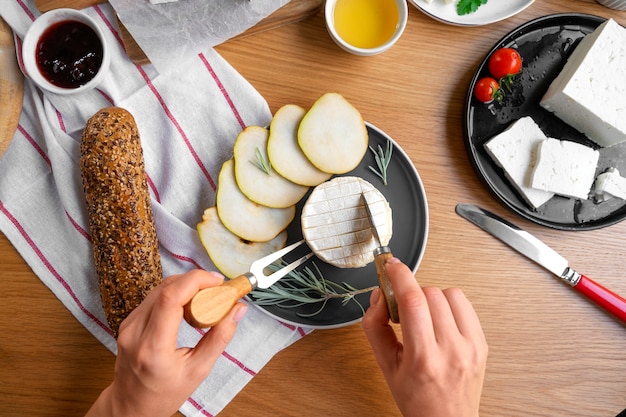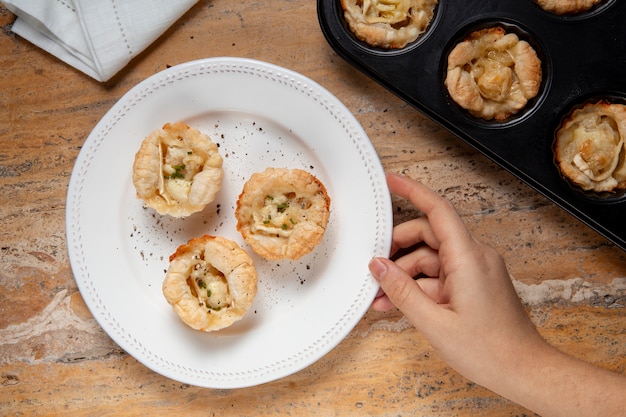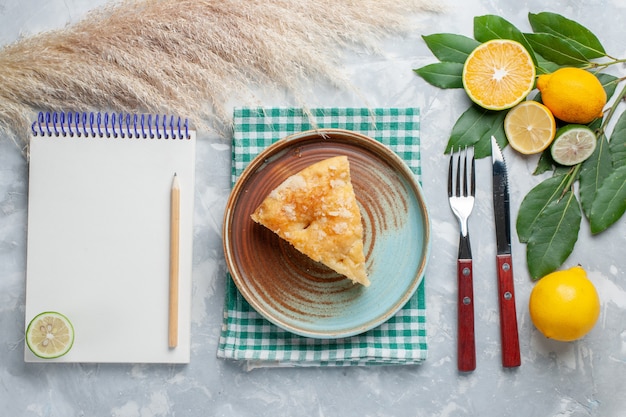(Part 1) The Crab: The Star of the Show

Let's get one thing straight: you can't have a good crabcake without good crabmeat. I'm talking fresh, sweet, succulent crabmeat, the kind that practically melts in your mouth. Now, I've tried my fair share of crabmeat in my time. From the delicate, sweet lump crab to the more affordable claw meat, each has its own charm. But for a truly exceptional crabcake, I always go for the lump crab. It's the best of the best, and it makes a world of difference in the final product.
Where to Get the Best Crabmeat
Finding the perfect crabmeat is like finding a rare gem. You want it to be fresh, preferably from a local source if you can. If you're lucky enough to live near the coast, head to your local fishmonger. They'll be able to guide you towards the freshest catch. Ask them about the type of crab and where it was caught. Don’t be afraid to ask questions! They are the experts.
If you’re not near the coast, don’t despair! You can still find great crabmeat at your local supermarket’s seafood counter. Just be sure to ask about their sourcing practices and freshness. Look for crabmeat that has been packed in a sealed container, as this helps to preserve its flavour and freshness.
Handling Crabmeat Like a Pro
You've got your precious crabmeat, but now what? Handling it delicately is key. Avoid over-mixing, as this can make the crabmeat tough. I gently break it up with my fingers, keeping the pieces a good size. Remember, you want to be able to taste those delicious chunks of crab. And don't be tempted to squeeze the moisture out of the crabmeat – that's the essence of its flavour!
(Part 2) The Binding Agent: The Glue that Holds it Together

Okay, now we need a binding agent. This is the stuff that holds your crabmeat together, gives it structure, and prevents it from falling apart when you cook it. There are tons of options out there: mayonnaise, Dijon mustard, egg yolks, bread crumbs… I've experimented with them all, and here’s what I've learned.
Mayonnaise: A Classic Choice
Mayonnaise is a classic choice for crabcakes. It adds a creamy richness and helps to bind the crabmeat together. But too much mayonnaise can make your crabcakes heavy and greasy. I prefer to use a light hand with it, just enough to moisten the crabmeat without overwhelming it.
Dijon Mustard: A Touch of Zing
Dijon mustard adds a bit of a zing to your crabcakes, and it complements the sweetness of the crab beautifully. Just a teaspoon or two is all you need to give your crabcakes a subtle kick.
Egg Yolks: The Secret to a Perfect Binding
Egg yolks are an essential ingredient in my crabcake recipe. They add moisture, richness, and binding power. They also help to create a smooth, silky texture, which I find absolutely irresistible. Just a couple of egg yolks do the trick.
(Part 3) The Crumbs: The Crunchy Outer Layer

Now, we're moving on to the crumb coating. This is the part that gets crispy and golden brown in the pan, creating a delicious contrast to the tender crabmeat inside. I've tried all sorts of crumbs, from plain breadcrumbs to panko breadcrumbs, even crushed crackers. And I’ve found that it all comes down to personal preference.
Plain Breadcrumbs: A Simple and Classic Option
Plain breadcrumbs are the most traditional choice for crabcake crumbs. They provide a good texture and a light, crispy coating. Just make sure you use fresh breadcrumbs for the best results. And don't be afraid to season them with a bit of salt, pepper, or herbs. The flavour will be absorbed by the crumbs as they cook.
Panko Breadcrumbs: A Light and Airy Crunch
Panko breadcrumbs are a Japanese-style breadcrumb that is known for its light and airy texture. They create a crispy crust that doesn't get soggy. They're a little more expensive, but they're worth the splurge, in my opinion.
Crushed Crackers: A Bold and Savoury Option
You can get adventurous with your crumbs, too. Crushed crackers, like Ritz crackers, add a bold and savoury flavour to your crabcakes. They also create a nice, crunchy coating. But use them sparingly, as they can make the crabcakes a little too salty.
(Part 4) The Flavour Boost: Elevating the Taste
Okay, so we've got the basics down. Now let's talk about how to add some flavour to our crabcakes. This is where you can really get creative and personalize your recipe. I love to add a few simple ingredients that really bring out the natural sweetness of the crabmeat.
Lemon Juice: A Bright and Refreshing Touch
Lemon juice is a great way to add a touch of brightness and freshness to your crabcakes. It also helps to cut through the richness of the crabmeat and the mayonnaise. Just a squeeze or two is all you need.
old bay seasoning: A Classic Crabcake Companion
Old Bay Seasoning is a classic crabcake seasoning blend. It's a mix of herbs and spices that adds a unique flavour to your crabcakes. It's a must-have in my kitchen, and I love the way it complements the crabmeat perfectly. If you can’t find Old Bay, you can make your own blend using a mix of paprika, black pepper, celery salt, cayenne pepper, and dried oregano.
Fresh Herbs: A Burst of Garden Goodness
Fresh herbs like parsley, dill, or chives add a wonderful burst of flavour to crabcakes. They're also a great way to add a touch of colour to your dish. I love to use a combination of herbs, depending on what's fresh in my garden. Don’t be afraid to experiment with different herb combinations, like a mix of tarragon, thyme, and chives, or parsley, cilantro, and oregano.
(Part 5) The Shaping: From Bowl to Pan
Right, we're almost ready to cook. It's time to shape those crabcakes. This is the fun part, where you get to use your creativity and give them the perfect shape. But it's also important to make sure they're the right size and thickness for even cooking.
Size and Shape Matters
I like to make my crabcakes about 3 inches in diameter and about 1 inch thick. They're a good size for handling and for cooking evenly. If you make them too big, the centre might not cook through. If you make them too small, they might cook too quickly and become dry.
Don't Overwork the Mixture
Now, gently shape your crabcakes using your hands. Just a little patting and shaping is all it takes. Don't overwork the mixture, as this can make the crabmeat tough.
Get Creative with the Shape
You can have fun with the shape of your crabcakes. I've tried square ones, round ones, even little patties. It's up to you to decide what looks best and what will work best for your recipe. If you're feeling extra creative, you can even make your crabcakes in the shape of a crab! Just use a cookie cutter to cut out the shape from the mixture.
(Part 6) The Cooking: Achieving Crispy Perfection
We're down to the wire, the moment of truth. It's time to cook those crabcakes. I prefer to pan-fry them, as it gives them a crispy outer crust and a juicy interior. But you can also bake them or grill them, depending on your preference.
Pan-Frying: Crispy on the Outside, Tender on the Inside
To pan-fry crabcakes, heat a good amount of oil in a large skillet over medium heat. Then gently place your crabcakes in the pan, making sure not to overcrowd the skillet. Cook for about 3-4 minutes per side, or until golden brown and cooked through.
You can tell if your crabcakes are cooked through by checking the internal temperature. They should reach an internal temperature of 165 degrees F (74 degrees C). If you're not using a thermometer, you can check to see if the crabmeat is opaque and flaky. If it's still translucent, it needs more time to cook.
Baking: A Healthier Option
For a healthier option, bake your crabcakes. Preheat your oven to 400 degrees F (200 degrees C). Place your crabcakes on a baking sheet lined with parchment paper and bake for 15-20 minutes, or until cooked through.
Grilling: A Smoky and Savoury Delight
Grilling crabcakes gives them a smoky, savoury flavour. Preheat your grill to medium heat. Grill your crabcakes for about 3-4 minutes per side, or until cooked through.
(Part 7) The Serving: A Culinary Masterpiece
You've made it! Your crabcakes are ready to be devoured. Now it's time to think about how to present them in a way that will make your taste buds sing. It's all about the finishing touches.
A Side of Remoulade: A Classic Pairing
A classic pairing for crabcakes is a good remoulade sauce. This creamy, tangy sauce is made with mayonnaise, mustard, and chopped gherkins. It's the perfect complement to the richness of the crabcakes. If you don’t want to make your own remoulade, you can find it pre-made at most supermarkets.
A Side of Coleslaw: A Refreshing Contrast
A side of coleslaw adds a refreshing contrast to the richness of the crabcakes. You can buy it pre-made or make your own. I like to make mine with a tangy dressing made with mayonnaise, vinegar, and a little sugar.
A Green Salad: A Light and Healthy Option
If you're looking for a lighter option, serve your crabcakes with a green salad. I like to keep it simple with a mix of greens, tomatoes, and a light vinaigrette dressing.
(Part 8) The Recipe: Your Culinary Blueprint
Ready to put your newfound crabcake knowledge into practice? Here's a basic recipe you can use to start your culinary journey.
Ingredients:
- 1 pound lump crabmeat, picked over and drained
- 1/4 cup mayonnaise
- 1 tablespoon Dijon mustard
- 2 egg yolks
- 1/4 cup plain breadcrumbs
- 1/4 cup panko breadcrumbs
- 1/4 teaspoon Old Bay Seasoning
- 1 tablespoon lemon juice
- 1 tablespoon chopped fresh parsley
- Salt and pepper to taste
- vegetable oil for frying
Instructions:
- In a large bowl, gently combine the crabmeat, mayonnaise, Dijon mustard, egg yolks, breadcrumbs, panko breadcrumbs, Old Bay Seasoning, lemon juice, and parsley. Season with salt and pepper to taste.
- Using your hands, gently form the mixture into 3-inch patties.
- Heat a large skillet over medium heat. Add enough vegetable oil to coat the bottom of the skillet.
- Carefully place the crabcakes in the skillet and cook for about 3-4 minutes per side, or until golden brown and cooked through.
- Serve immediately with your favourite sides, like remoulade sauce, coleslaw, or a green salad.
(Part 9) FAQs: Your Crabcake Queries Answered
I know you're bound to have a few questions. Let's get them answered, shall we?
1. Can I use imitation crabmeat?
I’m going to be honest, I’ve never used imitation crabmeat in my crabcakes. The taste and texture are just different. If you're on a budget, though, it can be a good option. But be warned, it's not as flavorful as the real thing.
2. How do I know if my crabcakes are cooked through?
You can tell if your crabcakes are cooked through by checking the internal temperature. They should reach an internal temperature of 165 degrees F (74 degrees C). If you're not using a thermometer, you can check to see if the crabmeat is opaque and flaky. If it's still translucent, it needs more time to cook.
3. How long can I store leftover crabcakes?
Leftover crabcakes can be stored in the refrigerator for up to 3 days. Reheat them in the oven or microwave. You can also freeze them for up to 3 months.
4. What are some other variations on the crabcake recipe?
There are endless possibilities when it comes to crabcakes. I've made crabcakes with jalapeno peppers, Old Bay seasoning, even crumbled bacon! Experiment with different herbs, spices, and flavours to create your own unique crabcake recipe.
Here are a few ideas to get you started:
- Spicy Crabcakes: Add some chopped jalapeno peppers or a pinch of cayenne pepper to your crabcake mixture for a kick.
- Bacon Crabcakes: Crumble some cooked bacon into your crabcake mixture for added flavour and texture.
- Herbed Crabcakes: Experiment with different herbs like dill, tarragon, thyme, chives, or oregano.
- Avocado Crabcakes: Mash up some avocado and add it to your crabcake mixture for a creamy, healthy twist.
5. What is the best way to clean up after making crabcakes?
Cleaning up after making crabcakes can be a bit messy, but it doesn’t have to be a nightmare. The most important thing is to deal with the mess as you go. Clean up any spills as you cook, and don't leave the dirty dishes sitting in the sink. Wash the skillet right away to avoid having burnt-on food. I find that using a sponge with a little bit of dish soap works best for cleaning up greasy messes.
(Part 10) Conclusion: A Culinary Journey Concluded
There you have it – my ultimate guide to making delicious crabcakes. I hope you enjoyed this culinary journey as much as I enjoyed sharing it with you. Now, go forth and create your own masterpiece! Remember, it's all about having fun and experimenting with different flavours and ingredients. With a little bit of practice, you'll be making crabcakes like a pro in no time.
Everyone is watching

Prime Rib Roast Cooking Time Chart: Per Pound Guide
Cooking TipsPrime rib roast. Just the name conjures images of lavish dinners, crackling fires, and hearty laughter. It’s ...

How Long to Bake Potatoes in the Oven (Perfect Every Time)
Cooking TipsBaked potatoes are a staple in my kitchen. They're incredibly versatile, delicious, and surprisingly easy to m...

Perfect Rice Every Time: The Ultimate Guide to Cooking Rice
Cooking TipsAs a self-proclaimed foodie, I've always been a bit obsessed with rice. It's the foundation of countless cuisi...

The Ultimate Guide to Cooking Asparagus: Tips, Techniques, and Recipes
Cooking TipsAsparagus. The mere mention of this spring delicacy conjures up images of vibrant green spears, crisp and burs...

Ultimate Guide to Cooking the Perfect Thanksgiving Turkey
Cooking TipsThanksgiving. Just the word conjures up images of overflowing tables laden with delicious food, the scent of r...
